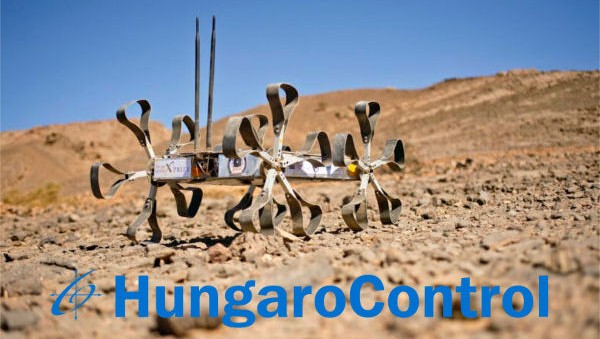HungaroControl sponsors Puli Space's field simulation test
- Dávid Fáber
- - 12 February 2012

HungaroControl announced that it will be sponsoring team Puli Space in its mission to compete for the Google Lunar XPRIZE and land a remote-controlled rover on the Moon. The air navigation company offered besides financial support an opportunity for the team to present itself at the World ATM exhibition in Madrid, 2013.
Discussions regarding further co-operation are under way. Team Puli Space aims to use the opportunity to benefit from the company’s extensive technological knowledge.
The sponsorship was announced in Team Puli Space’s newly established Mission Control Centre, which is a fully equipped headquarters designed to control the team’s current simulation experiments in the Sahara. The centre contains six workstations for the mission control team, and allows the communication with both the overseas desert simulation unit, and the local test prototype. The control centre is set up at the City Hall in Budapest, which also offers press rooms and live broadcast opportunities for the mission.
Team Puli Space is currently taking part in the MARS2013 simulation experiment organized by the Austrian Space Forum (OeWF). The goal of this mission is to test equipment for future Mars missions by using an area of the Moroccan Sahara as an analogue for a Martian environment. More than a hundred people from 20 different countries take part in the project, with tasks ranging from testing experimental Mars suits through trying out various rovers and exploring the environment, to simulating emergency situations.
Puli Space’s I2 rover uses this opportunity to test its remote navigation system and solar panels, while exploring the desert. The rover will explore a set of sandy and rocky environments, and navigate in foreign territory using its stereo cameras on five different running days. . Although the I2 is actually a Moon rover prototype, this simulation environment is also similar to a lunar mission in many aspects, and should therefore provide valuable information and experience for Team Puli Space. Communication with the rover is handled via OeWF’s system, which introduces time delays as are to be expected during an actual space mission.
Team Puli Space is undertaking these simulations to prepare for its upcoming Moon mission. According to the team’s road map, using the experience obtained from the I2 rover’s performance, the next step is to start work on a fully operational, space grade lunar rover, capable of completing an actual Moon mission in the next few years. The project is built up to accommodate requirements of the Google Lunar XPRIZE. The competition dubbed Moon 2.0 will reward successful teams from its 20M USD purse, for landing an automated rover on the Moon, travelling at least 500m on the lunar surface, and sending back high quality imagery from Earth’s companion.